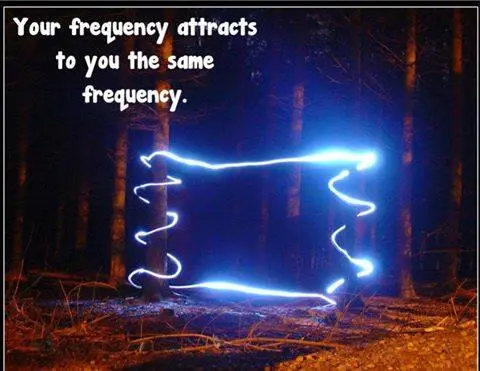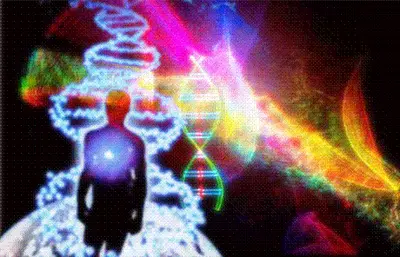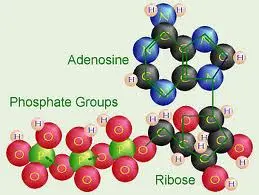|
We are, only as healthy as our cells.
To Have healthy cells in our present pollurted climate,
one has to take an active process. Regular tun-up of
our cells is not only feasible, but also necessary
to slow aging and reduce the risk of
cell dysfunction.

"Stem cells are a type of cell that has the potential
to develop into different cell types in the body. Because
of this, these types of cells can serve as a repair system
and theoretically divide without limit to replenish other
cells for as long as you are alive. When a stem cell
divides, each “daughter” cell has
the potential to either remain a stem cell
or become
another type of
cell with a more specialized function, such
as a heart muscle cell, a red blood cell, or
a brain cell.
In theory,
we might want to simply boost stem cells while
we are young and then use them to keep our
heart, hips,
brain,
and other parts our body healthy as we age"
Stem Cell Enhancement
Stem cells have the remarkable potential to develop into
many different cell types in the body. Serving as a sort
of repair system for the body, they can theoretically divide
without limit to replenish other cells as long as the person
or animal is still alive. When a stem cell divides, each
new cell has the potential to either remain a stem cell
or become another type of cell with a more specialized
function, such as a muscle cell, a red blood cell, or a
brain cell.
Stem cells are cells found in all multi-cellular organisms.
They retain the ability to renew themselves through mitotic
cell division and can differentiate into a diverse range
of specialized cell types. Research in the stem cell field
grew out of findings by Canadian scientists Ernest A. McCulloch
and James E. Till in the 1960s
Stem cell research has been hailed for the potential to
revolutionize the future of medicine with the ability to
regenerate damaged and diseased organs. This article presents
an overview of what stem cells are, what roles they play
in normal processes such as development and cancer, and
how stem cells could have the potential to treat incurable
diseases.
The Effects of a Pulsed Electromagnetic Field on
the Proliferation and Osteogenic Differentiation
of Human Adipose-Derived Stem Cells
Conclusions
These results suggest that PEMF can significantly
promote the proliferation and osteogenic differentiation
of adipose-derived stem cells so as to achieve the
purpose of treating fractures and large bone defects.
hASCs also have the same osteogenic differentiation
potential as BMSCs. These findings can provide insight
into the development of PEMF as an effective technique
for regenerative medicine. Source |
Stem cell research has been hailed for the potential to
revolutionize the future of medicine with the ability to
regenerate damaged and diseased organs. On the other hand,
stem cell research has been highly controversial due to
the ethical issues concerned with the culture and use of
stem cells derived from human embryos. This article presents
an overview of what stem cells are, what roles they play
in normal processes such as development and cancer, and
how stem cells could have the potential to treat incurable
diseases.

In addition to offering unprecedented hope in treating
many debilitating diseases, stem cells have advanced our
understanding of basic biological processes.
Three processes in which stem cells play a central role
in an organism, development, repair of damaged tissue,
and cancer resulting from stem cell division going awry.
Research and clinical applications of cultured stem cells:
this includes the types of stem cells used, their characteristics,
and the uses of stem cells in studying biological processes,
drug development and stem cell therapy; heart disease,
diabetes and Parkinson's disease are used as examples.
During development, stem cells divide and produce more
specialized cells. Stem cells are also present in the adult
in far lesser numbers. The role of adult stem cells (also
called somatic stem cells) is believed to be replacement
of damaged and injured tissue. Observed in continually-replenished
cells such as blood cells and skin cells, stem cells have
recently been found in other tissue, such as neural tissue.
Pulsed electromagnetic fields potentiate the paracrine
function of mesenchymal stem cells for cartilage
regeneration
Conclusions
We provide evidence that brief exposure to low amplitude
PEMFs enhanced the ability of MSCs to produce and
secrete paracrine factors capable of promoting cartilage
regeneration as well as protecting against adverse
inflammatory conditions. Furthermore, this report
highlights the importance of optimizing PEMF exposure
parameters for MSCs subjected to different culturing
conditions. Collectively, our results indicate that
PEMF stimulation could augment the production and
release of the MSC paracrine repertoire for the ultimate
enhancement of cartilage regeneration. Source |
Organ regeneration has long been believed to be through
organ-specific and tissue-specific stem cells. Hematopoietic
stem cells were believed to replenish blood cells, stem
cells of the gut to replace cells of the gut and so on.
Recently, using cell lineage tracking, stem cells from
one organ have been discovered that divide to form cells
of another organ. Hematopoietic stem cells can give rise
to liver, brain and kidney cells. This plasticity of adult
stem cells has been observed not only under experimental
conditions, but also in people who have received bone marrow
transplants.4
For wound healing in the skin, epidermal stem cells and
bone-marrow progenitor cells both contribute.6 Thus it
is likely that organ-specific progenitors and hematopoietic
stem cells are involved in repair, even for other organ
repair.
No other
cell in the body has the natural ability to generate
new cell types
Pulsed
Electromagnetic Field Therapy (PEMF) is a therapy
that influences cell behavior by inducing electrical
changes to occur that stimulates cellular regeneration
resulting in accelerated healing of damaged tissue, decreased
inflammation, pain relief and greater range of motion
with NO adverse reactions.
" PEMF
Therapy detoxifies the body at a cellular
level. Healthy cell metabolism is required to produce
energy and maintain cellular health. Pulser electro magnetic
fields induces electrical changes within the cell that
boosts cellular metabolism, regenerates blood cells,
improves circulation, increases the pH, enhances
stem cell production, increases cell
hydration and increases the cellular level of oxygen
absorption by up to 200%. If the cells are healthier
then the immune system becomes stronger, the nervous
system relaxes, bones,
joints and vital organs become stronger…ultimately,
giving the body the environment to heal and function
as God intended."
NASA
has invested billions of dollars into space program
research (including stem cell research)
during the last 20 years, involving multiple tests in space shuttles.
NASA
found that specific magnetic fields increased stem
cell growth and NASA found the exact magnetic field
that optimizes stem cell growth up to 4 fold and
increased about 120 tissue growth and regeneration
genes.

NASA Also discovered about a
400% increase in neural stem cells and
turned on about 160 genes that control growth and regeneration
10 hertz stimulation has been studied by NASA on stem
cells (Goodwin). With their particular 10 Hz signal,
NASA discovered about a 400% increase in neural stem
cells and turned on about 160 genes that control growth
and regeneration
Teath And Gums
In addition, research in Germany (Wever ) found that
10 Hz stabilized circadian rhythms. Use of this frequency
can restore jet lag and other sleep disturbances.

All cells need energy to function. Adenosine triphosphate,
created using food or sunlight, is the molecule that
cells use to store that energy for future use.Adenosine
triphosphate, also known as ATP, is the energy molecule
of all living cells. When plants get energy from sunlight
and animals get energy from food, this energy must be
converted to ATP before it can be used by the cells to
carry out all necessary functions.
| A 10 Hz pulsed
(square-wave) field increases cell's organic
production of ATP (the fuel that fires all cellular
processes). This is the premise behind the theoretical
proposition we call instantATP (organisms
under the influence of pulsed electromagnetic
fields 10 Hz) |

When cells are moderately low in ATP, the
major problem may be fatigue or exercise intolerance.
[Think
of a car
engine. If the gas in the tank is good
fuel, the engine runs well. If the gas has
water or sand in
it, the car
runs poorly.] Rhabdomyolysis (muscle cell
death) occurs when the cells don’t have
enough ATP (that is, the car runs out of gas).
Constant or on-going
weakness
may develop as a result of repeated low-grade
rhabdomyolysis.
NASA Uses Frequencies to Enhance Neural Tissue
Regeneration of nerve cells using 10 hz square EM fields
In 2003 NASA-Goodwin found 10 Hz square wave stimulation
caused neural tissue regeneration @ 4x baseline, w/better
3-D orientation; cell DNA signature reverted from maturation
to developmental (more than 175 maturation genes and
150 developmental genes pgs. 15-18)..
Cells that are mature are literally "tricked" into
believing they are younger than they are. Mitochondrial
DNA (mtDNA) may have been repaired through
some unidentified mechanism or to adequate
detoxification of mitochondrion
itself or cell protoplasm within which the
mitochondria reside
In NASA study above, mitochondrial robustness
due to 10 Hz stimulation provided the energy
to support
regeneration
at 4 times baseline. There is related information
in that author's patents at US 6485963 and
6673597, both
of which are titled "Growth stimulation of biological
cells and tissue by electromagnetic fields and uses thereof".

NASA's CONCLUSION:
" We have clearly demonstrated the bioelectric/biochemical potentiation
of nerve stimulation and restoration in humans as a documented reality".
Final Recommendation: "One may use square wave EM fields for":
a. repairing traumatized tissues
b. moderating some neurodegenerative diseases
c. developing tissues for transplantation
*the first study to clarify technologies and efficacy
parameters for tissue growth and restoration
Exposure to 10 Hz has an immediate and direct effect
on the mitochondria as demonstrated in the studies above.
Pure organic ATP according to biological paradigm on
planet Earth in both plants and animals.
A 10 Hz pulsed (square-wave) field increases cell's
organic production of ATP (the fuel that fires all cellular
processes). This is the premise behind the theoretical
proposition we call instantATP (organisms under the influence
of pulsed electromagnetic fields 10 Hz).
Introducingt magnetic
field to the human body is likewise expected
to stimulate production of stem cells. This
stimulation would allow the body to perform
rapid ‘self repair’ not
only in local tissues but also in the whole
body. Read
The NASA study here

Tools for PEMF stimulation using the NASA
research which found: that specific magnetic
fields increased stem cell growth
The electrical square waves are single electrical
pulses alternating positive -> negative -> positive -> … with
a 200 ms delay between each pulse to yield
5-10 Hz pulses per second.
Simulated 5-10 Hz electrical square waves tuned to
produce the necessary magnetic field waves between the
2 coils.
This protocol can be achieved with the rife opton 3h
- 3ah system here using the Rife amplifier and
the twin coil system
Few quarrel with predictions of the awesome potential
that stem cell research holds. One day, scientists say,
stem cells may be used to replace or repair damaged cells,
and have the potential to drastically change the treatment
of conditions like cancer, Alzheimer's and Parkinson's
disease and even paralysis
The
Ultimate PEMF machine
|
For ethical issues and stem cell research refer
to http://stemcells.nih.gov/info/ethics.asp; Ethical Issues Associated
with Pluripotent Stem Cells. Human Embryonic Stem Cells (2003)
ed. by Chiu A.Y., Rao, M.S, 3-25.
Sell, S. (2004) Stem cells. Stem Cell Handbook ed. by Sell, S.
1-18.
Forbes, S.J., Vig, P., Poulsom, R., Wright, N.A., Alison, M.R.
(2002) Adult Stem Cell Plasticity: New Pathways of Tissue Regeneration
become Visible. Clin. Sci. 103, 355-369.
Asahara T., Isner, J.M. (2004) Endothelial Progenitor Cells.
Stem Cell Handbook ed. by Sell, S. 221-227.
Lindblad, W.J. (2004) Stem cells in Dermal Wound Healing. Stem
Cell Handbook ed. by Sell, S. 101-105.
McCulloch, E.A. (2004) Normal and Leukemic Hematopietic Stem
cells and Lineages. Stem Cell Handbook ed. by Sell, S. 119-131.
Tsai, R.Y.L. (2004) A Molecular View of Stem Cell and Cancer
Cell Self-renewal. Intl. J. Biochem. Cell Biol. 36, 684-694.
Cai, J., Weiss M.L., Rao, M.S. (2004) In Search of "stemness".
Exp. Hematol. 32, 585-598.
Roach, M.L., McNeish, J.D. (2002) Methods for the Isolation and
Maintenance of Murine Embryonic Stem Cells. Embryonic Stem Cells
Methods and Protocols ed. by Turksen K. 1-16.
back to article
Evans, M.J., Kaufman, M.H. (1981) Establishment in Culture of
Pluripotenial Cells from Mouse Embryos. Nature 292, 154-156;
Axelrod, H.R. (1984) Embryonic Stem Cell Lines Derived from
Blastocysts by a Simplified Technique. Dev. Biol. 101, 225-228;
Wobus, A.M., Holzhausen H., Jakel, P., Schneich, J. (1984)
Characterization of a Pluripotent Stem Cell Line Derived from
a Mouse Embryo. Exp. Cell Res. 152, 212-219; Doetschman, T.C.
Eistattaer, H., Katz, M., Schmidt, W., and Kemler, R. (1985)
The in vitro development of Blastocyst Derived Embryonic Stem
Cell Lines: formation of Yolk Sac, Blood Islands and Myocardium.
J. Embryol. Exp. Morphol. 87, 27-45.
Thompson, J.A., Kalishman, J., Golos, T.G., Durning, M., Harris,
C.P., Becker, R.A., Hearn, J.P. (1995) Isolation of a Primate
Embryonic Stem Cell Line. Proc. Natl. Acad. Sci. USA 86, 7844-7848;
Thomson, J.A, Itskovitz-Eldor, J., Shapiro, S.S., Waknitz, M.A.,
Swiergiel, J.J., Marshal, V.S., Jones, J.M. (1998) Embryonic
Stem Cell Lines Derived from Human Blastocysts. Science 282,
1145-1147.
Amit, M., Segev, H., Manor, D., Itskovitz-Eldor, J. (2003) Subcloning
and Alternative Methods for the Derivation and Culture of Human
Embryonic Stem Cells. Human Embyronic Stem Cells ed. by Chiu,
M., Rao, M.S. 127-141.
Carpenter, M.K., Xu, C., Daigh, C.A., Antosiewicz, J.E., Thomson,
J.A. (2003) Protocols for the Isolation and Maintenance of Human
Embryonic Stem Cells. Human Embyronic Stem Cells ed. by Chiu,
M., Rao, M.S.
Drukker M., Benvenisty, N. (2003) Genetic Manipulation of Human
Embryonic Stem Cells. Human Embryonic Stem Cells ed. by Chiu,
A.Y., Rao, M.S. 265-284.
back to article
Shamblott, M.J., Axelman, J., Wang, S., Bugg, E.M., Littlefield,
J.W., Donovan, P.J., Blumenthal, P.D., Huggins, G. R., Gearhart
J.D., (1998) Derivation of Pluripotent Stem Cells from Cultured
Human Primordial Germ CellS. Proc. Natl. Acad. Sci.USA 95,
13726-13731.
Doyonnas, R., Blau, H.M. (2004) What is the Future of Stem Cell
Research? Stem Cell Handbook ed. by Sell, S. 491-499.
Draper, J.S. Moore, H., Andrews, P.W. (2003) Embryonal Carcinoma
Cells. Human Embryonic Stem Cells ed. Chiu, A. Y., Rao, M.S.
63-87.
Adult Stem Cells ed. Turksen, K. (2004) Nosrat, I.V., Smith,
C. A., Mullally, P., Olson, L., Nosrat C.A. (2004) Dental Pulp
Cells Provide Neurotrophic Support for Dopaminergic Neurons and
Differentiate into Neurons in vitro; implications for Tissue
Engineering and Repair in the Nervous System. Eur. J. of Neurosci.
19, 2388-2398.
back to article
Shen, C-N., Horb, M.E., Slack, J.M.W., Tosh,D. (2003) Transdifferentiation
of Pancreas to Liver. Mech. Dev.120, 107-116.
Priller, J. (2004) From Marrow to Brain. Adult Stem Cells ed.
by Turksen, K. 215-233.
de Wynter, E.A. (2003) What is the future of Cord blood stem
cells? Cytotech. 41, 133-138.
Gossler, A., Doetschman, T.C., Eistattaer, H., Katz, M., Schmidt,
W., Kemler, R. (1986) Transgenesis by means of Blastocyst Derived
Embryonic Stem Cell Lines. Proc. Natl. Acad. Sci. USA 83, 9065-9069.
Thomas, K.R., Capecchi, M.R. (1987) Site-directed Mutagenesis
by Gene Targeting in Mouse Embryo-derived Stem Cells. Cell 51,
503-512.; Koller, B.H., Hageman, L.J., Doetschman, T.C., Hagaman,
J.R., Huang, S., Williams, P.J., et. al. (1989) Proc. Natl. Acad.
Sci. USA 86, 8924-8931.
back to article
For review: Floss,T., Wurst, W. (2002) Functional Genomics by
Gene-trapping in ES cells. Embryonic Stem Cells Methods and
Protocols ed. by Turksen, K. 347-379.
McNeish, J. (2004) Embryonic Stem Cells in Drug Discovery Nat.
Rev. Drug Discov. 3, 70-80.
Davila, J.C., Cezar, G.G., Thiede, M., Strom, S., Miki, T., Trosko
J. (2004) Use and Application of Stem Cells in Toxicology. Toxicol.
Sci. 79, 214-223.
Till, J.E., McCulloch, E.A. (1961) A Direct Measurement of the
Radiation Sensitivity of Normal Mouse Bone Marrow Cells. Radiat.
Res. 14, 2213-222.
Thomas, E.D. (1999) Bone Marrow Transplantation: a Review. Semin.
Hematol. 36, 95-103.
back to article
Barker, R.A., Jain, M., Armstrong, R.J.E., Caldwell, M.A. (2003)
Stem Cells and Neurological Disease. J. Neurol. Neurosurg.
Psychiat. 74, 553-557.
Jackson, K.A., Goodell, M.A. (2004) Generation and Stem Cell
Repair of Cardiac Tissue. Stem Cell Handbook, edited by Sell,
S. 259-266.
Kehat, I., Khimovich, L., Caspi, O., Gepstein, A., Shofti, R.,
Arbel, G., Huber, I., Satin, J., Itskovitz-Eldor, J., Gepstein,
L. (2004) Electromechanical Integration of Cardiomyocytes Derived
from Human Embryonic Stem Cells . Nature Biotechnol. 22, 1282-1289.
Fraser, J.K., Schreiber, R.E., Zuk, P.A., Hedrick, M.H. (2004)
Adult Stem Cell Therapy for the Heart. Intl. J. Biochem. Cell
Biol. 36, 658-666.
back to article
Cohen, S., Leor, J. (2004) Rebuilding Broken Hearts. Scientific
American Nov. 2004, 45-51.
Street, C.N., Sipione, S., Helms, L., Binette, T., Rajotte, R.V.,
Bleackley, R.C., Korbutt, G.S. (2004) Stem Cell-based Approaches
to Solving the Problem of Tissue Supply for Islet Transplantation
in Type I Diabetes. Intl. J. Biochem. Cell Biol. 36, 667-683.
Bouwens, L. (2004) Islet Cells. Stem Cell Handbook ed. by Sell,
S. 429-438.
Seaberg, R.M., Smukler, S.R., Kieeffer, T.J., Enikolopov, G.,
Asghar, Z., Wheeler M.B., Korbutt, G., van der Kooy, D. (2004)
Clonal Identification of Multipotent Precursors from Adult Mouse
Pancreas that Generate Neural and Pancreatic Lineages. Nat. Biotechnol.
22, 1115-1124.; SeNakajima-Nagata, N., Sakurai, T., Mitaka, T.,
Katakai, T., Yamaot, E., Miyazaki, J., Tabata, Y., Sugai, M.,
Shimzu, A.. (2004) In vitro Induction of Adult Hepatic Progenitor
Cells into Insulin-producing Cells. Biochem. Biophys. Res. Commun.
318, 625-630.
Baier, P.C., Schindehutte HJ., Thinane, K., Flugge G., Fuchs,
E., Mansouri, A., Paulus, W., Gruss, P.,Trenwalder, C.(2004)
Behavioral Changes in Unilaterally 6-Hydroxy-Dopamine Lesioned
Rats after Transplantation of Differentiated Mouse Embryonic
Stem Cells without Morphological Integration. Stem Cells 22,
396-404.
Lindvall O., Bjorklund, A. (2004) Cell Therapy in Parkinson's
Disease. NeuroRx. 1, 382-393.
Zheng, X., Cai, J., Chen, J., Luo, Y., Zhi-Bing Y., Fotter, E.,
Wang, Y., Harvey, B., Miura, T., Backman, C., Chen, G-J., Rao,
M.S., Freed. W.J. (2004) Dopaminergic Differentiation of Human
Embryonic Stem Cells. Stem Cells 22, 925-940; Wilmut, I., Paterson,
L.A. (2004) Stem cells and Cloning. Stem Cell Handbook ed. by
Sell, S. 75-80.
Barker, R.A., Widner, H. (2004). Immune Problems in the Central
Nervous System Cell Therapy. NeuroRx. 1, 472-481.
|

